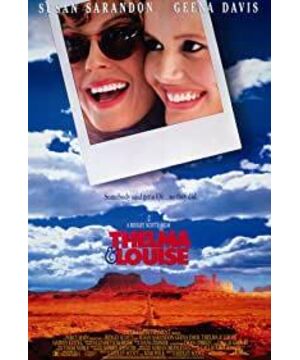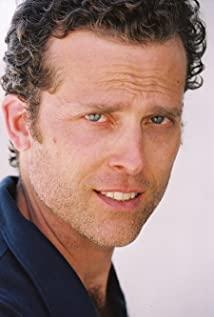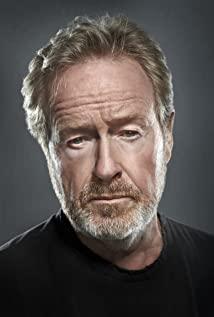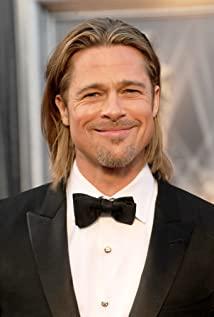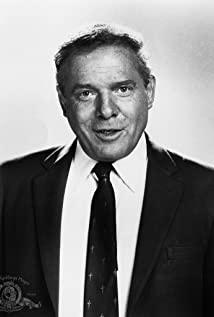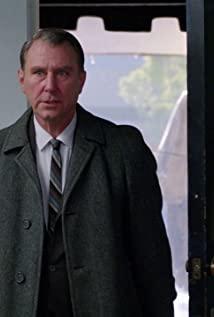This is a female road film, and American film critics have no objection on this point. But as far as ideological connotation is concerned, film critics have different opinions and opinions. Some think this is a typical feminist film, a manifesto of feminism, and successfully described the heroine as an ordinary woman who was forced to go to extremes under the oppression of men. Some think this is a typical anti-feminist film, depicting the heroine as dangerous as a male violent person, and the heroine should be an opponent of violence. Some film critics read the text of lesbian in the ending scene of the film (the two protagonists kissing before the abyss). Some film critics regard this film as a negative film in which women escape from patriarchy. Other film critics believe that the above analysis is a one-sided view of the blind. They believe that this film is rich in ambiguity, and any one-sided view cannot cover the film's proper meaning. In academic discussions, it is normal to make different analyses of the same text and draw different or even opposite conclusions. The fierce controversy over this film provides us with an excellent opportunity to discuss the theory and practice of feminist film and the significance of this film in detail, and draw our own corresponding conclusions.
The theory and practice of feminist films are almost synchronized. At the end of the 1960s, the climax of the women’s liberation movement in Europe and the United States laid the foundation for women to fight for their academic, work, and family status. In the academic field, women’s voices often have to gain social attention through their professional works. Therefore, in the 1970s and 1980s, a large number of works by female scholars were published, including academic works on feminist theories. Feminist film theories and criticisms emerged and developed under such conditions and atmosphere of resistance to male power.
Since the beginning of the 1970s, feminist film theory has gone through three stages, namely the initial sociological stage, the middle psychoanalytic stage, and the recent cultural research stage. This is just a simple segmentation method for the convenience of writing. In fact, the discussion of each stage contains certain concepts of the other two stages.
1. Sociological stage: This theory emerged in the early 1970s. In 1971, four important female documentaries "Growing into Women", "Jenny of Jenny", "Three Lives" and "Women's Film" were released. These documentaries use direct film shooting techniques, allowing women to directly tell their feelings and experiences to the camera, and express the feminist slogan "Personal is political" in reflection. There are two most important feminist theoretical works of this period. One is Marjorie Rosen’s "Popcorn Goddess" and the other is "Notes on Female Films" edited by Claire Johnston. Various female models created in the past ten years are described and commented vividly and satirically. The latter is a collection of initial feminist film theory reviews. "Popcorn Goddess" categorizes the women created in Hollywood into two types, one is the enchanting type, represented by the image created by the silent actress Setta Barra; the other is the angel type, with the actress Mary Bick The image created by Fu is representative. Rosen pointed out that the above types are far from women in real life. Rosen’s research focuses on the analysis of visual images, without emphasizing the ideological analysis in the storyline, and fails to touch the patriarchal structure of society, so it is preliminary. However, this work still has sociological value and is a masterpiece of early feminist film research.
2. Psychoanalysis: Juliet Mitchell's "Psychoanalysis and Feminism" was published in 1974, and Laura Malvey's "Visual Pleasure and Narrative Film" was published in 1975, both of which are based on feminist film theory Important writings. Since then, the theoretical research on feminist films has strengthened the application of psychoanalysis. Malvey's thesis represents the theoretical exploration of feminist film research from the first stage to the second stage, and soon attracted the attention of academia. Although Malvey pays attention to the countless unreal female images created by Hollywood commercial films, she focuses on the internal composition of the film and the psychological relationship between the film and the audience. She believes that psychological factors are actually the mechanism that supports the special charm of movies (especially voyeurism and fetishism). Dim cinemas are the ideal environment for this mechanism to work. Freud and Lacan The analysis of sexual psychology explains why women, not men, are used as objects to induce these psychological mechanisms. The huge Hollywood film industry is built on the basis of "men watching, women being watched", and it is a cultural expression of patriarchal ideology. Malvey’s analysis of the relationship between film and patriarchal social ideology laid the foundation for the second stage of feminist film theory.
3. Cultural research stage: Film theory began to pay attention to historical research in the early 1980s, trying to deal with various complex factors in the cultural system. This cultural research model originated from the works of a group of scholars studying television and popular culture at the University of Birmingham in the United Kingdom. Corresponding to this, the theoretical research on feminist film has also entered the third stage-cultural research stage. The representative of this stage is Teresa de Lauritis. She questioned the psychoanalytic theories of male masters such as Freud and Lacan, and believed that although these theories have some points that can be used, they are after all male discourse and essentially defend the patriarchal ideology. Therefore, these feminist film theorists began to explore women's consciousness from all aspects of social life, and expanded from pure film theory research to the exploration and research of complex social, political, historical, cultural and other fields. They believe that Western society is run around patriarchy, and women are always in a passive, "looked at", and inferior position. The patriarchal society uses various methods to manipulate the mass media, including movies and television, to create various concepts about inequality between men and women. Therefore, they stated that it is not enough to limit themselves to exposing and criticizing sexism in movies.
The University of Chicago's "Symptom" quarterly published a famous speech by the distinguished female lawyer Catherine McKinnon. In her speech, she put forward the concept of "sexual harassment" for the first time. She said: "Sex in feminism is the same as labor in Marxism. These are the two most precious things that people have. However, these are also the two things that people most often violate..." "Sexual harassment" The proposal of the concept has completely changed the attitude of American law towards women. Now, this concept has become a powerful weapon for women to oppose machismo.
The concept proposed by McKinnon in the 1970s was accepted and recognized by the U.S. High Court in 1986. By November 1991, Judge Larence Thomas, nominated by Bush for the president of the Supreme Court, was accused of sexual harassment and used The live broadcast of the Senate’s hearing on television made “sexual harassment” quickly a household crime.
From the early 1970s to the present, Western feminist film theory research has a history of decades, has developed into an important part of film theory, and has become one of the main fields of film theory research in Western universities. The world occupies a certain position. At the same time, the practice of feminist films has also made continuous progress. For example, "From Nine to Five O'clock" and this film are two of the more important ones.
From the above brief analysis of the development of feminist film theory, it can be seen that the core of feminism is to oppose patriarchal ideology and patriarchal social mechanisms, while sexual harassment and sexual violence are important external manifestations of this mechanism. one. Analyzing from this perspective, in terms of the theme and overall structure, the film is obviously a feminist film, and a feminist road film with the color of a western film.
This film describes in detail a series of retaliations caused by sexual violence and sexual harassment. Sylma was nearly raped. Louise was a rape victim. The new hatred and the old hatred prompted Louise to stand in the position of defending the dignity of women and shoot at the macho Harlan, who regarded women as playthings, and ended his life. During the trip, a lecherous tanker driver repeatedly sexually harassed them and insulted their personalities. In an unbearable situation, they drew shots and shot the tanker. The driver saw the tanker burned and shouted, but he was helpless. Sylma kindly gave a young cowboy a ride and went to bed with him, but she didn't expect to be deceived, looted and penniless. She was forced to rob the store in order to survive, and at the same time to vent her inner resentment. All these extreme reactions and criminal behaviors have certain rationality under certain conditions, and they often win the sympathy of audiences, especially female audiences, and this is the social effect that feminist films want to achieve. Therefore, in feminist films, violence is a means that has to be used on specific occasions, and it is a self-defense action of "returning to the human body".
The vast majority of Hollywood films are male-centered, and women are often squeezed to the margins and in a passive state. But this film does the opposite. Women are always at the center of the narrative, while men are squeezed to the edge and in a passive state. At the end, the two heroines drove into the Grand Canyon with a smile and made the final struggle against the patriarchal society. They were active, while the policemen who stayed on the cliff, the defenders of the patriarchal society, saw them fall into the deep valley but helpless. , Is passive.
This film, like most films, adopts a temporal and spatial sequential structure in the processing of the drama, without flashbacks, no flashbacks, no voice-overs, and no narration. The shooting of Harlan was a turning point in the lives of Silma and Louise: Suddenly, they went from happy travel companions to fugitives pursued by the police. They drove to the wilderness in the west, not to a refuge, but to leave all the refuges behind the car and fled to the abyss-a free space. The film is narrated through parallel montages from beginning to end. One is a "criminal" who runs away by car, and the other is a policeman who is in hot pursuit, and finally meets in the Grand Canyon, leading to a tragic ending.
The film always focuses the camera on Sylma and Louise, and there are not many shots for male characters. The two heroines stayed together all the time, with only three exceptions: one time at the beginning of the film, the two were in their own homes to prepare outfits, and the camera switched back and forth between the two; one time in a motel in Oklahoma City, Louise Arguing with her boyfriend Jimmy in a guest room, Sylma flirting with the cowboy JD in another room, and the camera switches back and forth between the two rooms; one time Sylma entered the shop alone and robbed Louise in the car waiting At this time, the camera was always aimed at the waiting Louise, but the live situation of Sylma's robbery of the store was only seen by the audience when the police and Sylma's husband Darryl watched the videotape of the robbery scene. Except for these three brief separations, the two never separated. Obviously, the director's arrangement is in line with the requirements of the road film. At the same time, he wants to tell the audience that the fate of the two has been closely linked, and they are dependent on each other in adversity and life and death, and they can never be separated.
The film’s handling of time is non-deterministic. How long did it take from the start of the trip to the shooting of Harlan? How long did it take for the two heroines to escape? How long is the time between the two scenes? The videos are not clearly explained. Originally, the transition between day and night in the film should be the best sign to determine the time, but in this film, the two drove away day and night, and the time seemed to continue to extend. In fact, time is not important here, it is important to escape itself and where to escape.
The direction in which the two fled has changed several times and is also uncertain. After the shooting of Harlan, the two ran away in a hurry, just wanting to leave the crime scene and leave the state boundary as soon as possible. As for where they flee, it is not clear. I went to Oklahoma City to withdraw money. After I got the money, I wanted to flee to Mexico. Later, JD betrayed them and told the police about their attempt. They were forced to go west, then fled north, and finally came to Arizona. The Grand Canyon of the Colorado River in the northwest of the state ended their ordinary and difficult life.
"Sylma and Louise" was one of the top ten grossing films in the summer of 1991 in the United States. MGM and EMI Entertainment have taken an unusual step by adding 99 more theaters in the 16th week of the film’s release to expand the film’s distribution range. By September 27, 1991, it was screened at another 300 spots (mainly in universities). The main target of the film is female audiences between 25 and 40 years old. Women of this age are the main supporters of the women’s liberation movement. The female owner of a women’s bookstore liked the film very much. She said: “A female customer told me that they all know these men. Every woman knows Sylma’s husband. Some of them are married to them. Type of man."
View more about Thelma & Louise reviews


